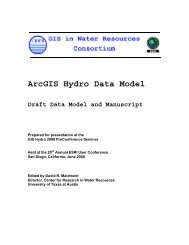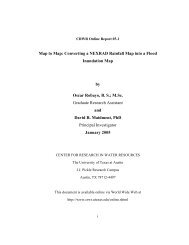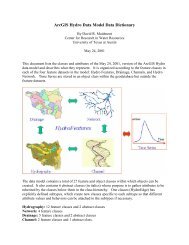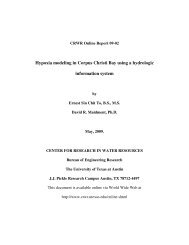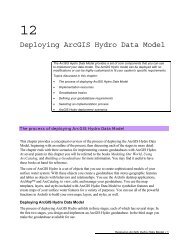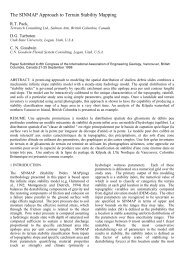View the Whole Report - Center for Research in Water Resources ...
View the Whole Report - Center for Research in Water Resources ...
View the Whole Report - Center for Research in Water Resources ...
You also want an ePaper? Increase the reach of your titles
YUMPU automatically turns print PDFs into web optimized ePapers that Google loves.
<strong>the</strong>se two values. The flow through this particular geotextile is turbulent at <strong>the</strong> high end<br />
of <strong>the</strong> range of heads tested. The def<strong>in</strong>ition of permittivity described <strong>in</strong> ASTM D 4491<br />
assumes lam<strong>in</strong>ar flow and, <strong>the</strong>re<strong>for</strong>e, does not apply <strong>for</strong> higher heads.<br />
The results of <strong>the</strong> permeameter tests show that <strong>the</strong> relationship between <strong>the</strong> head<br />
and flow is not a l<strong>in</strong>ear function. Flow through at least one of <strong>the</strong> fabrics is def<strong>in</strong>itely<br />
turbulent. These results show that ASTM permittivity is not appropriate <strong>for</strong> predict<strong>in</strong>g<br />
<strong>the</strong> hydraulic per<strong>for</strong>mance of geotextiles when <strong>the</strong>y are used as silt fence fabrics.<br />
52




